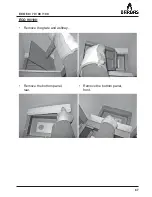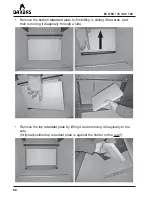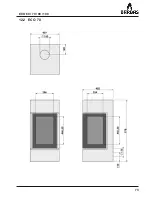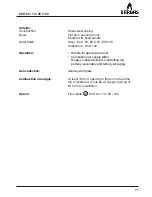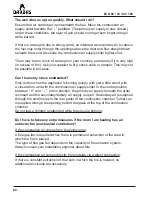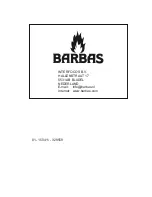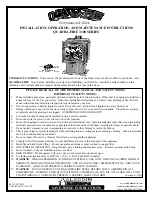
81
ECO 60 / 70 / 90 / 100
What is creosote?
Creosote is a tar-like deposit which is left in the chimney. It is formed in poor
combustion conditions when burning wood (damp wood, pinching off the air
supply to the stove or burning impregnated or painted wood for example).
Creosote ignites at approx. 500°C. This temperature can easily be reached if the
fire is raging. This means that deposits of creosote in your chimney could cause
a chimney fire.
What happens when wood is burnt?
The combustion process.
The combustion of wood involves the following steps.
Drying
The first step is that the fuel (wood) dries out. Even at low temperatures
(~ 100°C), any moisture still in the wood will evaporate. This drying procedure
implies a significant loss of energy if wood which is ‘too’ damp is burnt. The
right degree of moisture is achieved after 1.5 - 2 years of drying. The moisture
content is then 15 - 17%.
Decomposition
At moderate - high temperatures (150°C - 350°C), the decomposition process
can be discerned. This is when the chemical structure of the fuel breaks down.
This process involves the creation of volatile compounds such as carbon
monoxide (CO), water vapour (H
2
O) and methane (CH
4
). In addition, substances
which are volatile at decomposition temperature but condense at lower
temperatures are often released. These are the tar-like components (this by-
product is also known as creosote, which is deposited in the chimney and cold
parts of the stove in poor burning conditions).
Combustion of the products of decomposition
The volatile compounds burn in the gas phase if O
2
(air) is added. The ignition
temperature of these volatile compounds is approx. 550°C.
Combustion of solid hydrocarbons
The solid component that remains consists of pure hydrocarbons, which will burn
at approx. 800°C if O
2
(air) is added.
Summary of Contents for ECO 60
Page 2: ......
Page 3: ...3 ECO 60 70 90 100 ECO 60 Floor plate is optional ECO 90 ECO 70 ECO 100...
Page 4: ...4 ECO 60 70 90 100...
Page 10: ...10 ECO 60 70 90 100...
Page 72: ...72 ECO 60 70 90 100 12 DIMENSIONS 12 1 ECO 60...
Page 73: ...73 ECO 60 70 90 100 12 2 ECO 70...
Page 74: ...74 ECO 60 70 90 100 12 3 ECO 90...
Page 75: ...75 ECO 60 70 90 100 12 4 ECO 100 SOAPSTONE...
Page 82: ...82 ECO 60 70 90 100...
Page 83: ......

